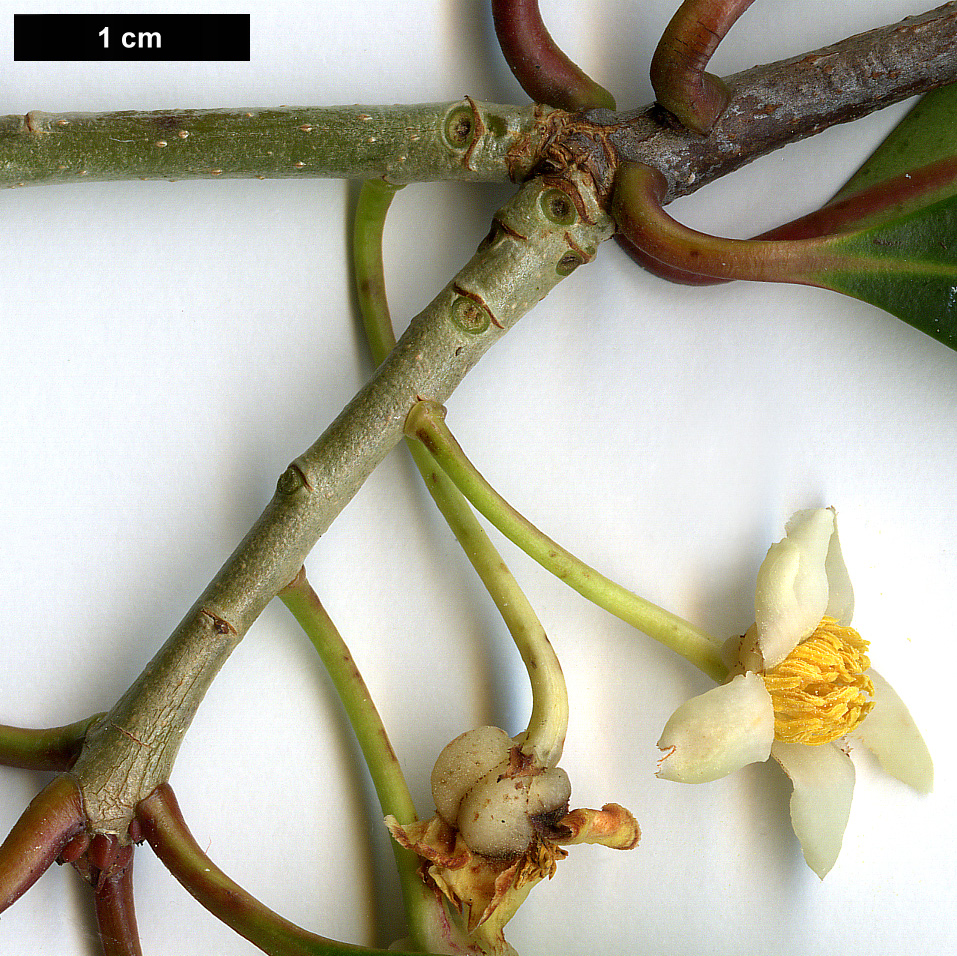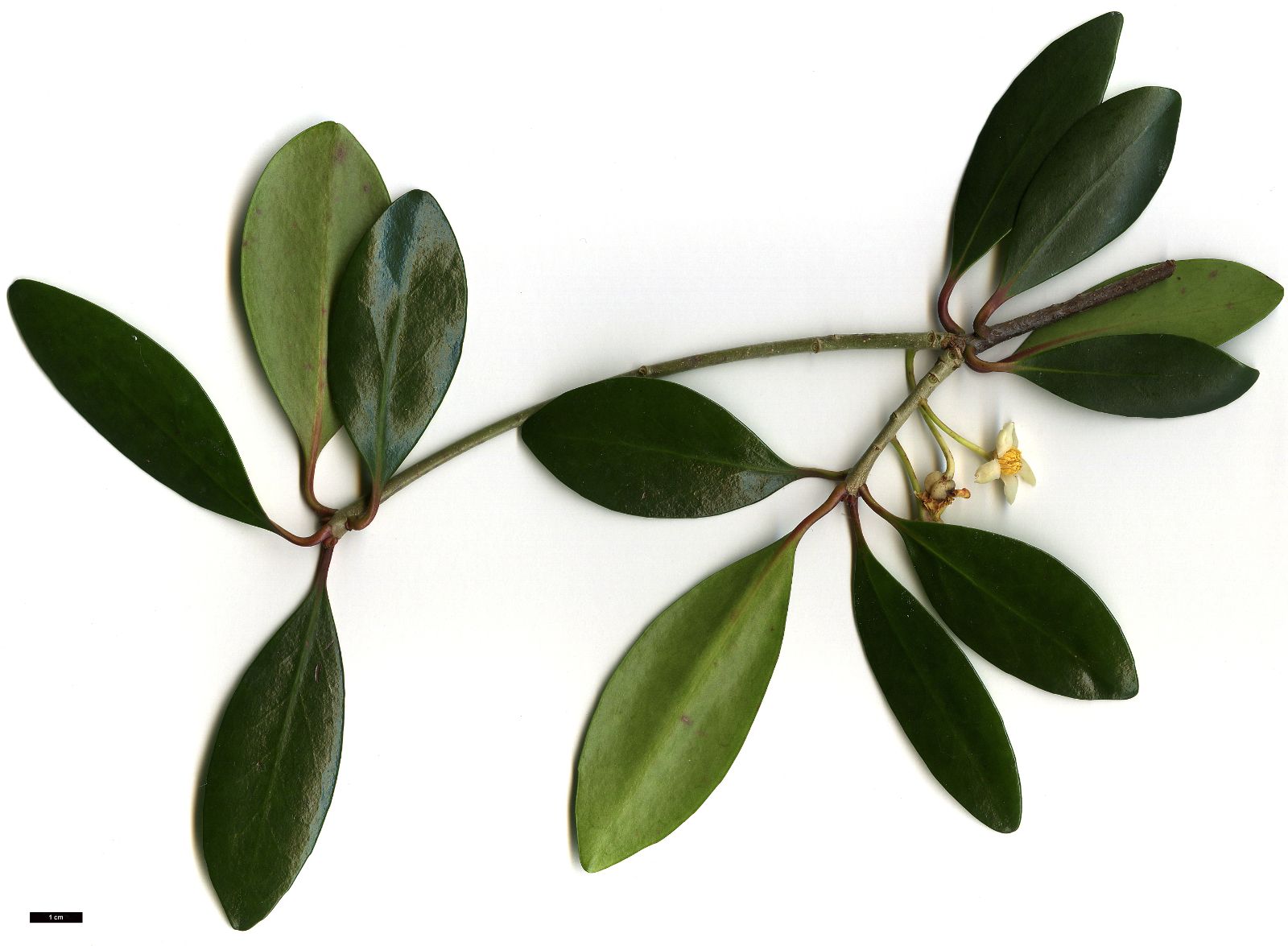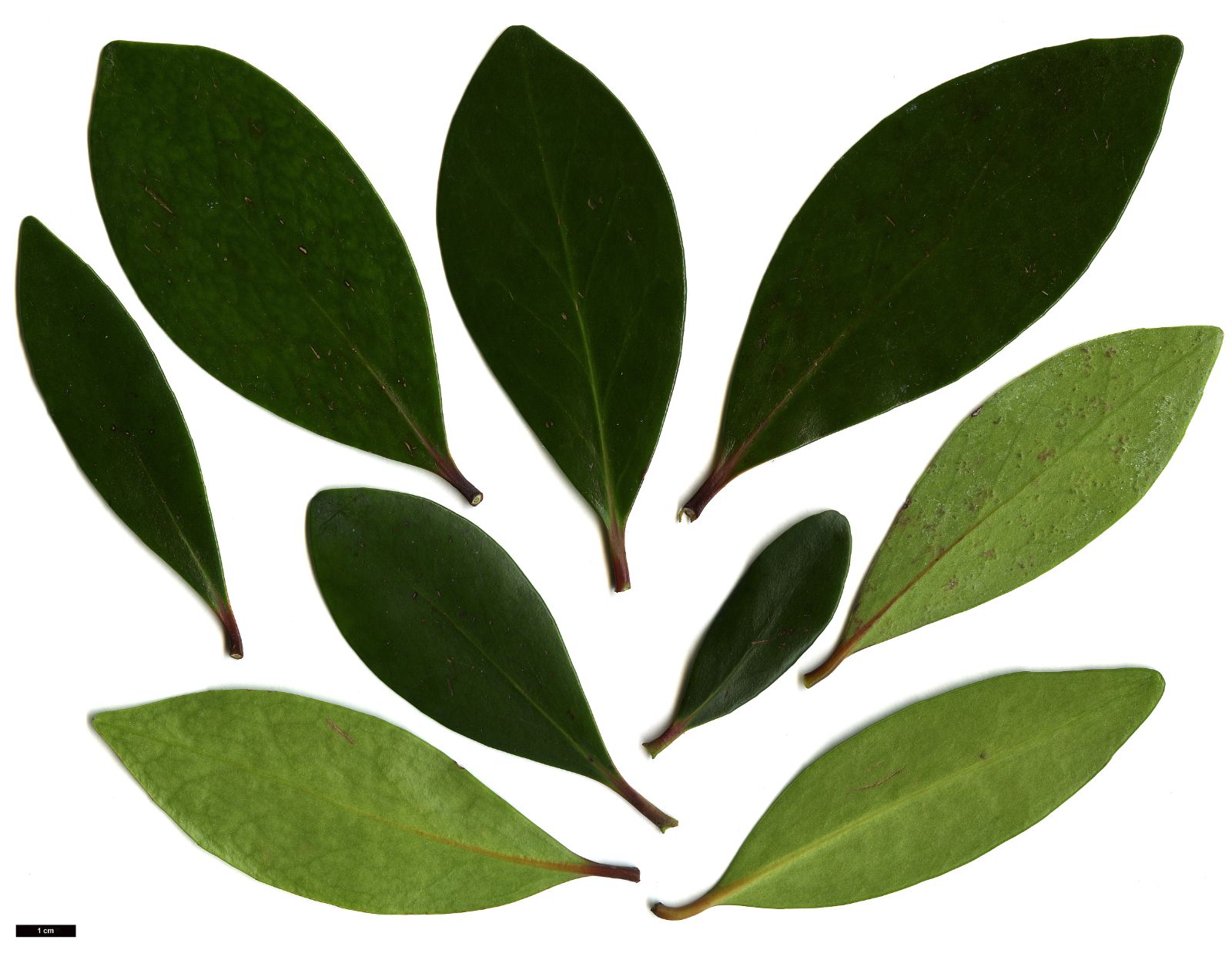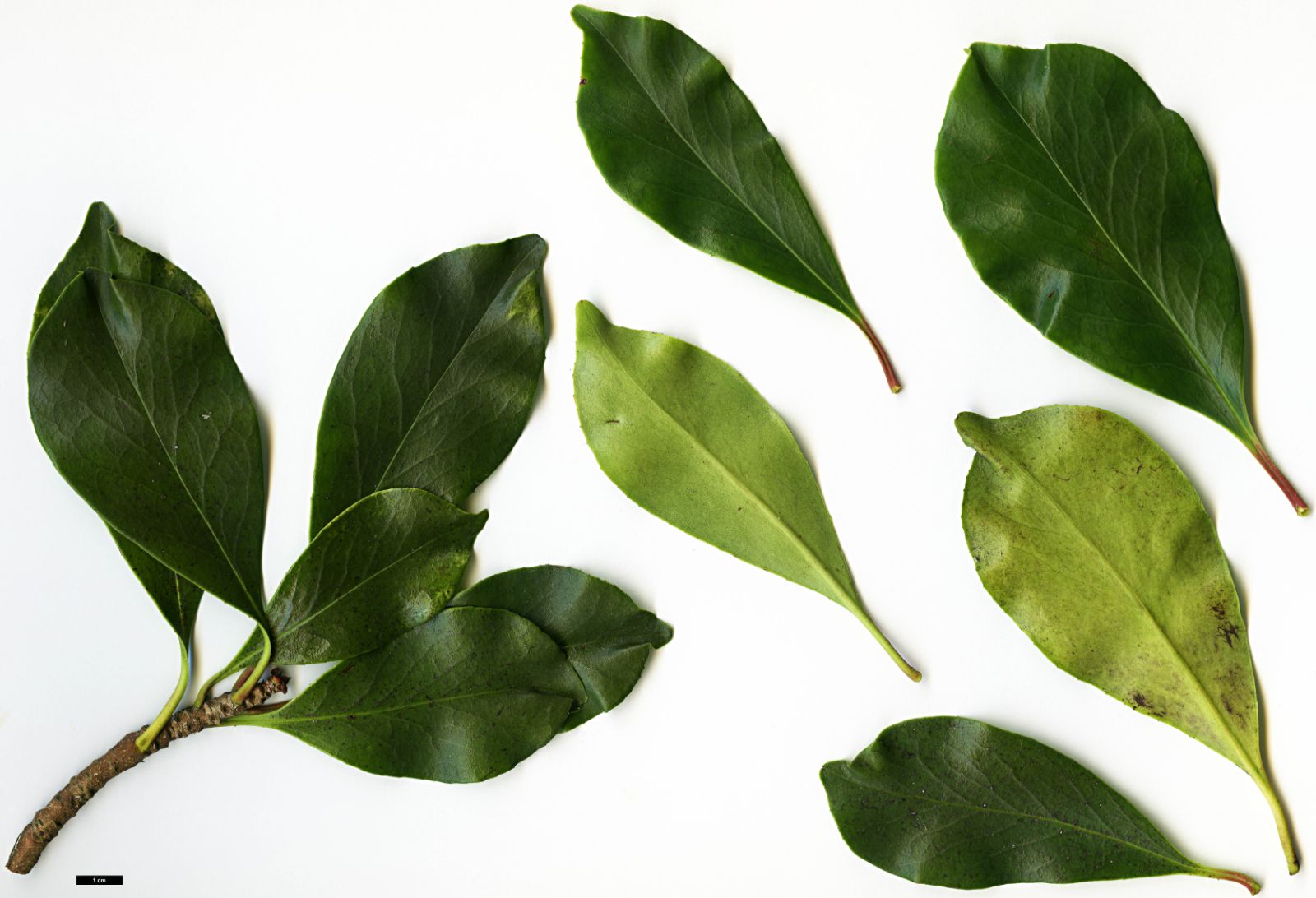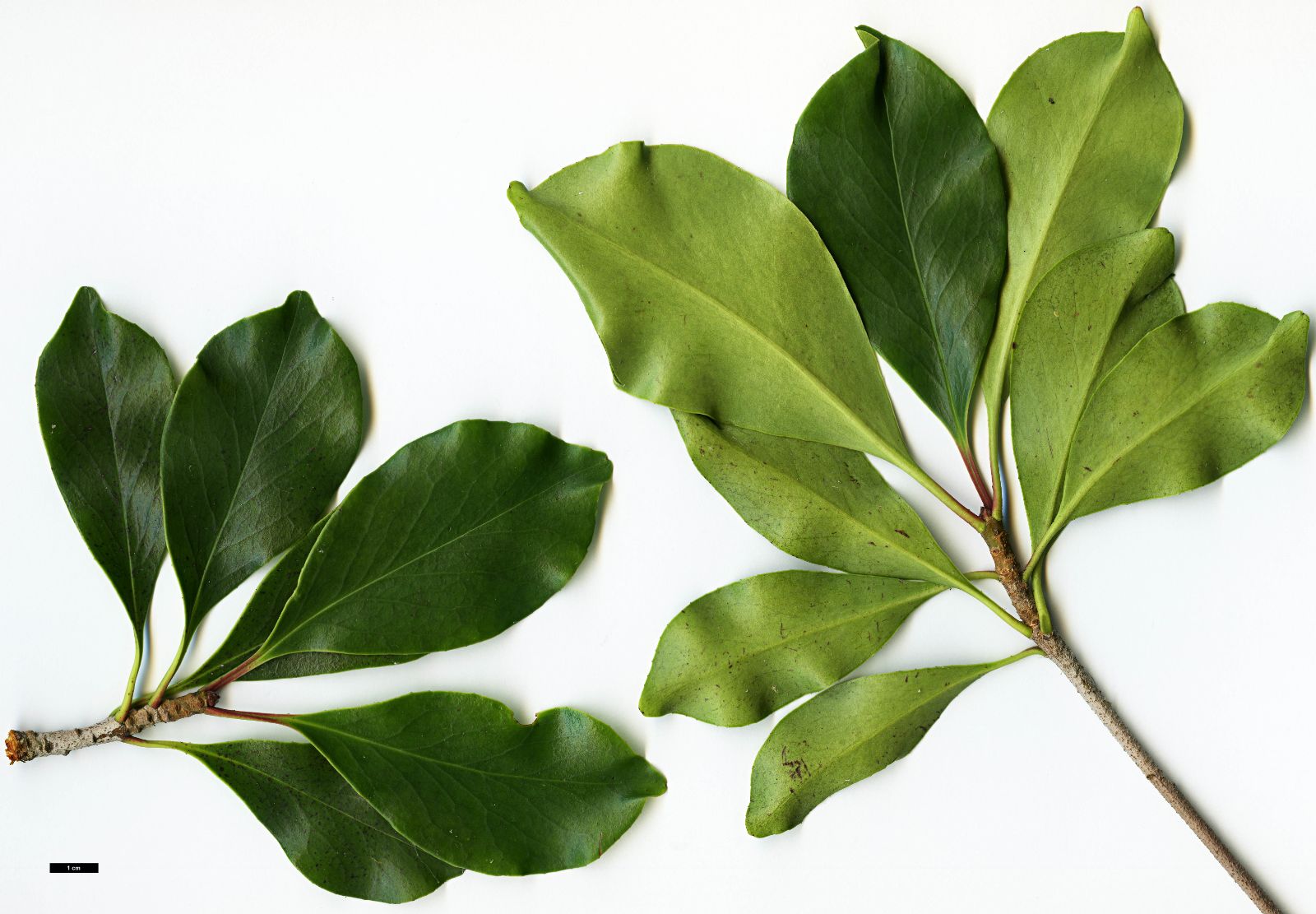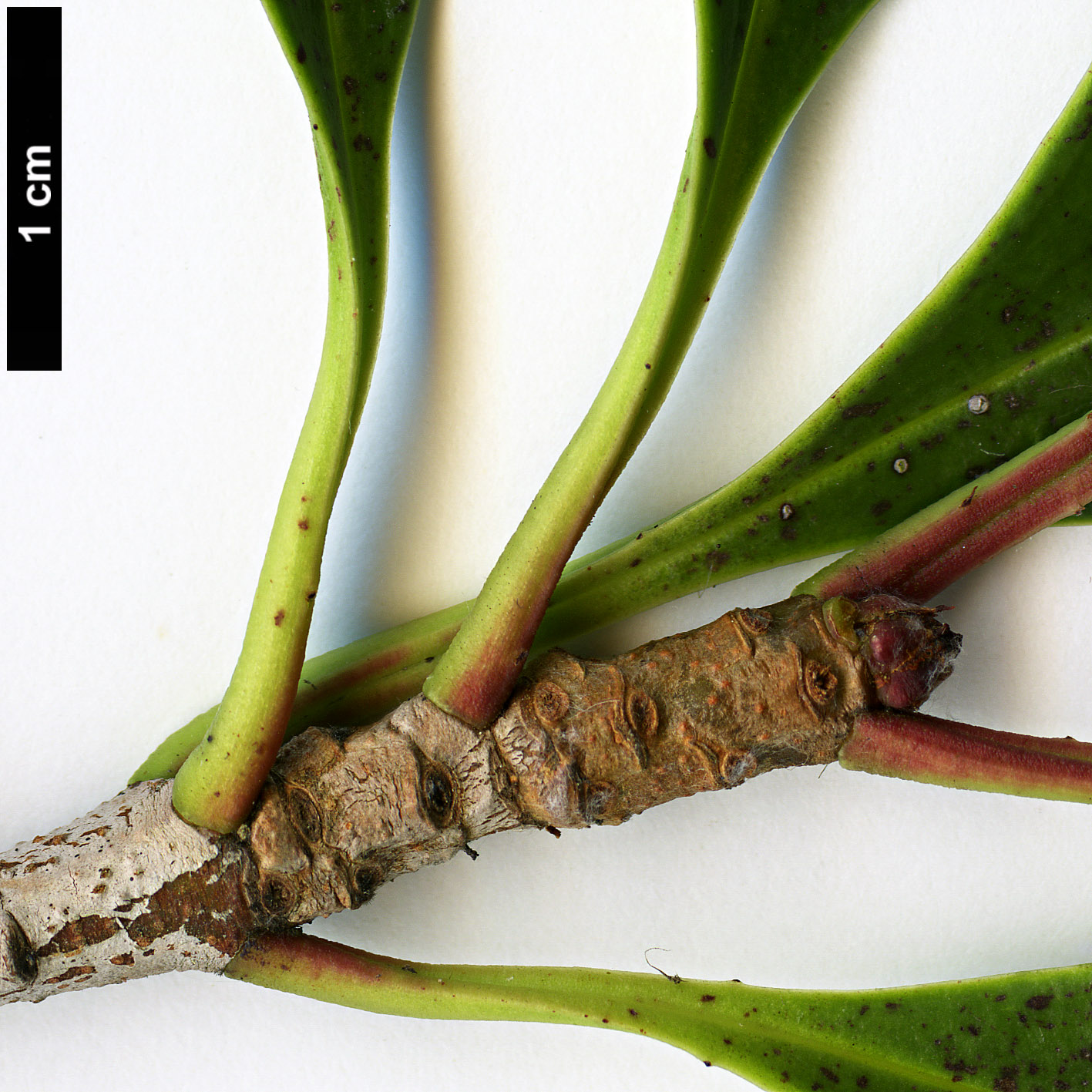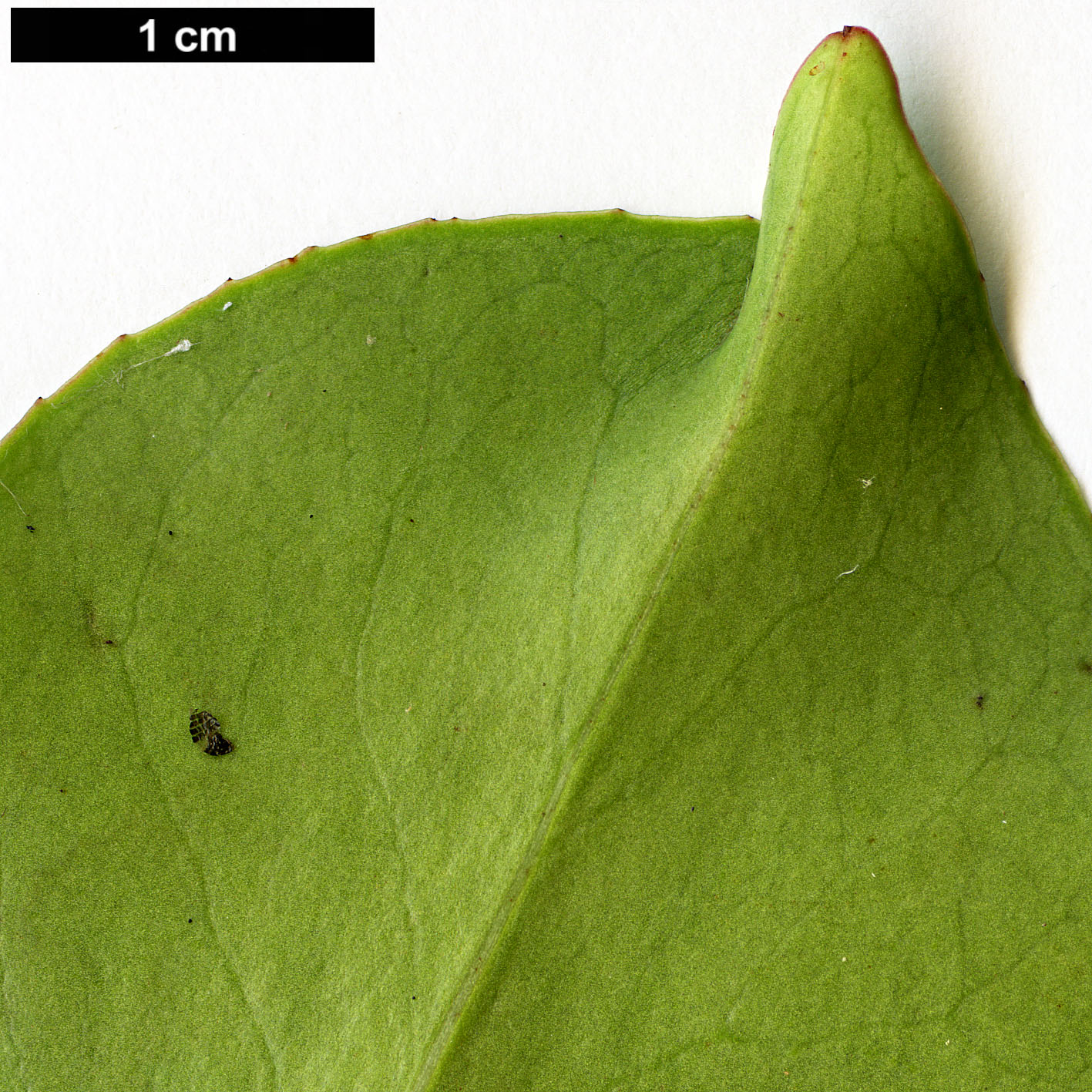Ternstroemia gymnanthera
Credits
Article from Bean's Trees and Shrubs Hardy in the British Isles
Recommended citation
'Ternstroemia gymnanthera' from the website Trees and Shrubs Online (treesandshrubsonline.
Genus
Synonyms
- Cleyera gymnanthera Wight & Arn.
- Ternstroemia japonica Thunb., in part
An evergreen shrub or small tree with a much-branched head, and warted, not downy branchlets. Leaves alternate, crowded at the apex of the shoot, obovate or oblanceolate, 11⁄2 to 3 in. long, 1⁄2 to 11⁄2 in. wide, tapered gradually at the base to a short, stout, purplish stalk, more abruptly tapered to a rounded or bluntish apex; they are dark varnished green, thick and leathery, and quite glabrous. Flowers fragrant, solitary on stalks about 3⁄4 in. long, nodding, of short duration, produced in July and August from the leaf-axils, and from the axils of fallen scales on the lower naked part of the shoot. Corolla yellowish white, about 1⁄3 in. across; petals five. Fruit globose, and about the size of a cherry, yellow, tinged with rose on the sunny side, the rounded sepals persisting at the base.
A species of wide distribution in E. Asia, from India eastwards, extending north as far as S. Japan and S. Korea; introduced in the early part of the 19th century but probably lost until reintroduced early in the present century. It has withstood 20° F of frost at Kew but is not reliably hardy outside the mildest parts and not of much ornamental value. It has been confused with Eurya japonica, but this has broader-ended, more distinctly obovate leaves and is dioecious. The Japanese plant named T. japonica by Thunberg is Cleyera japonica.

